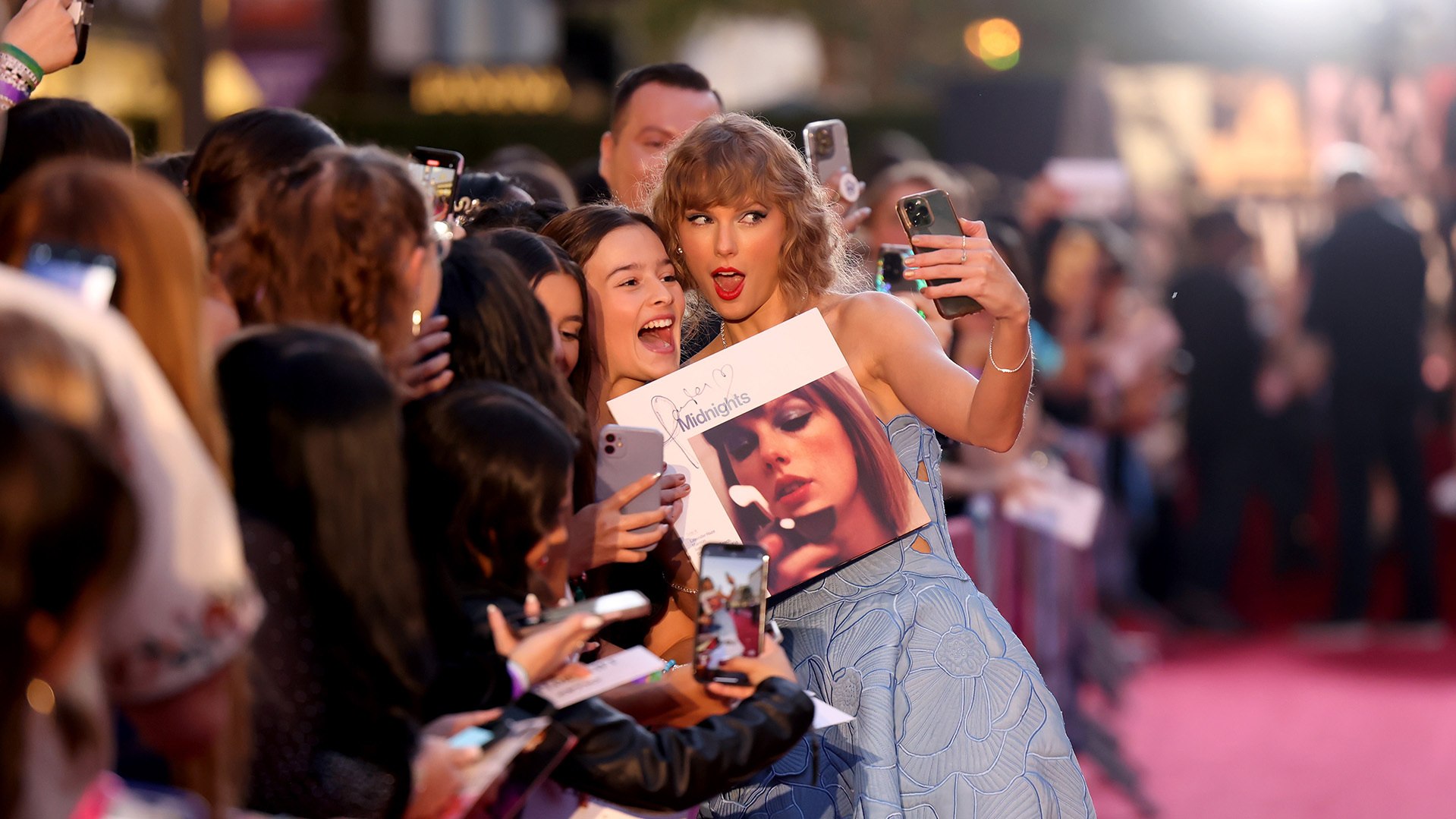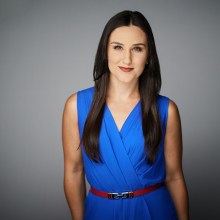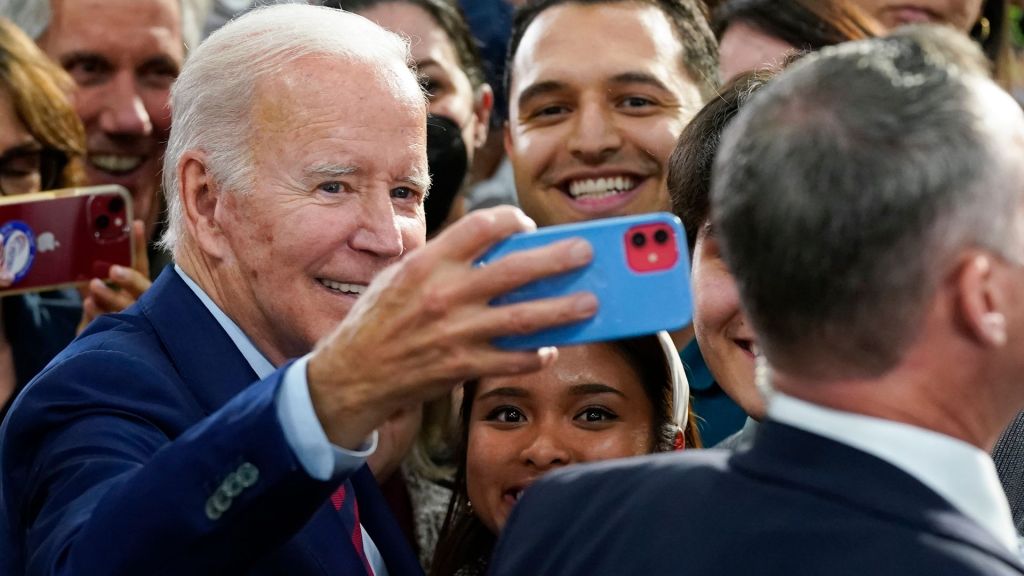
Beyoncé: Who run the world, girls.
Simone Del Rosario: But really. You’d be surprised at just how much purchasing powHER is female. In 2023, there are three women who have dominated the economy: Beyoncé, Taylor Swift and Barbie. These three have shown what can be gained when you properly target the female consumer. They spend in droves. Women influence or control more than 80% of consumer spending in the U.S., according to Forbes. But in business, the female consumer is widely underestimated. How can companies capitalize on this market without falling into the “make it pink” mindset? I’m joined by Abby Davisson, author and founder of the Money and Love Institute.
Abby, everything Taylor Swift touches turns to gold. She even has more women watching NFL games. The Chiefs Bears game a few weeks back, Roku said female viewership ages 18 to 49, that perfect ad target, was up 63% week over week. What is the takeaway when you’re looking at business, like the NFL, which clearly leans male in its marketing?
Abby Davisson: Well, for so long, women have controlled purchasing decisions, right? Ford was marketing the Model T to women in the 1920s. But what’s different is those products were often kind of marketed to women but not designed for women; not made to have, you know, they would shrink them and pink them, right, that was kind of the way that they targeted women. But what’s different now is that, you know, obviously, we can surmise that what’s driving that increase is the dating activity of one of the NFL players, right? Taylor Swift has been spotted. And so really, women are interested in Taylor. We saw so much activity over the summer with the Eras Tour and now with the movie out. And this is an entrepreneur who is driving her own experiences, driving the products that she creates and she is a uniting force.
Simone Del Rosario: So what should the NFL take away from this? I know this is about her personal life. But financially, there’s so much more here.
Abby Davisson: Yes, I mean, they have been missing a huge consumer by not incorporating women more into the NFL. I mean, sure, there have been women who watch the NFL for a long time. But it’s been in spite of the marketing, not because of the marketing. And so if it takes something like a love interest to get them, more women to watch the NFL then they should run with that, they should think about the angles that women are more interested in, think about the personal stories that they could tell about their players that they have been overlooking that could keep them there now that they’re watching.
Simone Del Rosario: I love that. Let’s talk about the classic ‘make it pink’ mindset, which some companies do, I’d say to cheaply cater to women and charge more. Do female consumers fall for it?
Abby Davisson: You know, I think for a long time, those were the only products available for women. And so they had no choice, right? They would go from everything from running shoes to investment accounts have been made by men and sold to women, but not because they were designed for women. They were sort of the same product, but yeah, shrunk or turned pink or purple. And what women are now realizing as more women become entrepreneurs, and in last year, only 2% of venture capital funding went to women, all-women teams that were raising money for their companies. But some of those women have been successful in raising money, more and more women are starting their own companies and realizing, hey, we can actually make products that are designed for women. So a running shoe, for example, Olympian Allyson Felix is designing a woman, a shoe on a woman’s foot, the last that is used for her company Saysh. There are so many examples of how, when women are able to design the products, they are better suited to female customer and women respond.
Simone Del Rosario: Yeah, there’s this immense amount of opportunity in this space. What sort of companies do you think are best positioned to capitalize and what does that look like?
Abby Davisson: Well, you know, a huge opportunity is in health care. Women are certainly the bigger decision makers when it comes to deciding on their family’s health care. And we have seen just how important health is, right, over the last several years with pandemic and so with the rise of more telehealth, women are the major telehealth consumers, I think companies that are thinking about women, thinking about how they can better serve families in the space of health care will be successful. Same with childcare, right? That was one of the things that we saw over the pandemic. I mean, women left, millions of women in the US were forced to leave their jobs to care for their family members during COVID. Those losses have now been erased as of the last quarter of 2022. So we’ve seen women come back in droves, but the childcare needs are still there. So companies that are innovating in the childcare and eldercare spaces are also poised to reap the benefits of additional spending.
Simone Del Rosario: And it’s not just those areas that we think of as being more traditionally women, like childcare. But women purchased more than 50% of the products that are thought of to be more traditionally male. We’re talking cars, home improvement, electronics. Are we seeing companies start to adjust to this reality and what are they missing if they aren’t?
Abby Davisson: Yeah, I think there are some companies that are starting to adjust. But I think that a large number of companies don’t realize that women are the controllers of the spending. They’re the treasures of their families. You know, I hope they can be more than the treasurers, they can be the CFOs and be thinking big about what they can, what they want to see in the world and directing their funding that way their investments and their spending that way.
Simone Del Rosario: Do you see the success of Taylor, Beyoncé, Barbie, as a sort of reckoning?
Abby Davisson: You know, I think it’s helpful that people’s eyes have been open to what can happen when women who, again, I mentioned they were they left the economy in droves during COVID, then with the rise of remote work and other flexible arrangements, you know, were able to come back and then wanted to spend, right, wanted to have those memory making moments. So many women took their families to see Taylor Swift and Beyoncé to share the experience. And so I do think it’s an eye opening moment, it really should be an eye opening moment for companies who have not traditionally been thinking about women as, you know, purchasers and real powerhouses when it comes to driving the economy. I mean, Taylor Swift changed the economies of cities single handedly by bringing her concerts there. And I know that Justin Trudeau in Canada asked her to bring her tour to Canada for the economy. And she’s doing that, right. So people are responding. And I hope that that happens with more frequency.
Simone Del Rosario: Yeah, it’s unbelievable, I mean, multibillion dollar economic effect that Taylor Swift has had this year alone. But this has to be authentic. Right? What are some of the common mistakes a company might make trying to tap into this growth market?
Abby Davisson: We think first of all, having women leading those initiatives, right, I think it’s going to sound seem hollow or inauthentic if there are not women driving. I think what is so authentic about Taylor is that she is the mastermind behind her her empire, right? She designed the Eras Tour to encompass all of her eras, not to say there is one and we should only be paying attention to one, but to think about all of the things that makes her her. And I hope that companies have women not only leading the teams, but on the engineering teams powering the back end of the products. Because when you have more diverse teams, not just women, but you know people of all genders, people of all races, then those products are better made. They are targeted towards a broader range of people and they miss things that less diverse team, they don’t miss things that less diverse teams might miss.
Simone Del Rosario: Yeah, it reminds me of a scene in Barbie where Will Ferrell’s character is leading the Mattel power house and it’s just a room full of men…
Barbie movie excerpt: Could I just meet the woman in charge? Your CEO? Oh that would be me. Oh, your CFO? Me. Your COO? Here. President of the Barbie Division? Present. I’m a man with no power, does that make me a woman?
Simone Del Rosario: …and they kind of poke fun at exactly what you’re talking about, but it is what we see in the real world. And we’ll see if there is a seismic shift to take account for the 80% of consumer spending that women control. Abby Davisson, author of Money and Love. Thank you so much for your thoughts today.
Abby Davisson: Thank you. It was great to be here.







